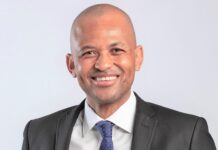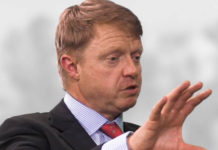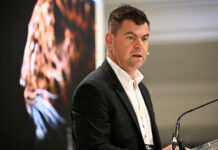
[miningmx.com] – GOLD Fields has unveiled plans to unbundle its South African mines to shareholders creating a 1.4 million oz/year gold producer – renamed Sibanye Gold – and which will be led by former staffer, Neal Froneman.
The company will consist of the KDC complex and Beatrix but exclude the South Deep project and the Ghanaian assets which would remain in Gold Fields, as well as its international assets. Both Gold Fields and Sibanye would be listed on the JSE.
Nick Holland, who will remain CEO of Gold Fields, said he expected the unbundling to be complete and the two companies trading separately by around February 11. The transaction does not require shareholder support. The South African Reserve Bank had approved the proposal, Gold Fields said.
Following the unbundling, Gold Fields shareholders will hold two separate shares – Gold Fields and Sibanye Gold – or the American Depository Receipts of both as Sibanye Gold will also trade on the New York Stock Exchange.
“We have been debating this for some time,” Holland said in response to a question as to whether the unbundling was motivated by the recent spate of labour disruptions estimated to have cost it R2.1bn in revenue. “This was prompted by the disappointing share price performance,” he said.
Shares in Gold Fields increased 2% in the first hour of trade on the JSE, but over the last year, the share has gained only 6%, notwithstanding an increase to record levels in the rand gold price. Over two years, the share is 18% higher.
Holland said that union leadership had been apprised of the company’s unbundling plans. “They are busy digesting it,” he said. There would be no job losses and plans for a profit share scheme were in place.
“We have to do something different,” he added referring to the increasingly high cost base of Gold Fields’ South African assets. Holland said earlier this week that unless extraordinary steps were made, South Africa would have no gold industry in five years.
Froneman, who was head of Gold Fields’ Kloof division between 2002 and 2003, said he approached the appointment with “a very open mind”, adding that while Sibanye could be a consolidating force in the South African gold mining industry, he had no preconceptions on what may be achieved. Froneman was until recently CEO of Gold One International.
RATIONALE
Explaining the rationale of the proposed unbundling, Holland said that Sibanye Gold would be a “fit-for-purpose company” that would be spared competing for capital with the group’s international operations; nor would it be burdened by group-wide development and exploration costs.
“The investment case for Sibanye Gold includes a more optimal management of its assets to secure sustainable long-term returns; ring-fenced cash flows to fund internal growth requirements; as well as a strong dividend policy, thus rewarding shareholders for investing by offering them leverage to the rand gold price,” Gold Fields said in a statement to the JSE.
GOLD FIELDS
Separated from KDC and Beatrix, as well as tailings assets on the west Rand, the larger Gold Fields would consist of 2.2 million oz of production, based on the output of South Deep and the international assets in the last financial year, and resources totalling 64 million oz. Of this resource base, two-thirds was attributable to South Deep, a mine on which some R30bn had been spent with a further R5bn in capital expenditure aimed at taking production to 700,000 oz/year.
Gold Fields also said it would invest up to R500m building alternative forms of housing, including family accommodation, at South Deep in an effort to eliminate the migrant labour system that has been largely blamed for the three months of strikes at the South African mines this year.
The unbundling also sheds light on Gold Fields’ efforts to negotiate a new operating model of round-the-clock operations at South Deep. Negotiations instituting the changes nearly resulted in restructuring as unions disputed aspects of it.
“Gold Fields will offer its shareholders strong leverage to the gold price through a highly cash generative, globally diversified portfolio, as well as a disciplined approach to growth and project development,” the company said.
The policy of distributing 25% to 35% of normalised headline earnings would continue at Gold Fields. A dividend policy for Sibanye Gold had not yet been decided, Froneman said.
An analyst observed that the transaction might be the first step in the greater internationalisation of Gold Fields. “I wouldn’t be surprised if this was the first step to giving Gold Fields a fully-fledged international listing,” he said.









